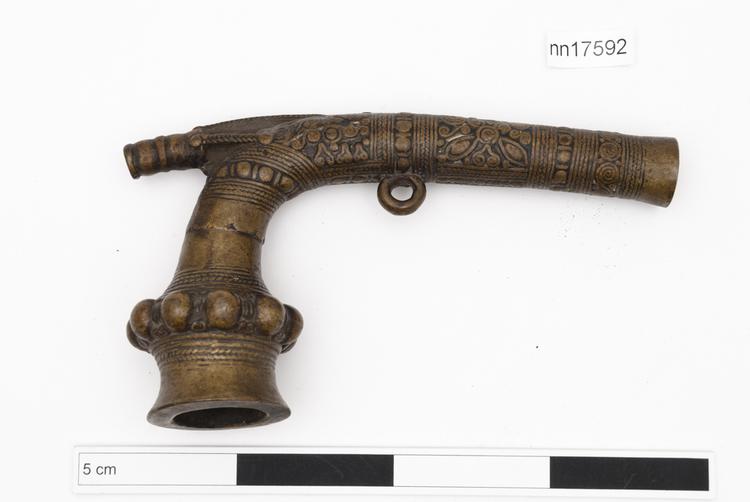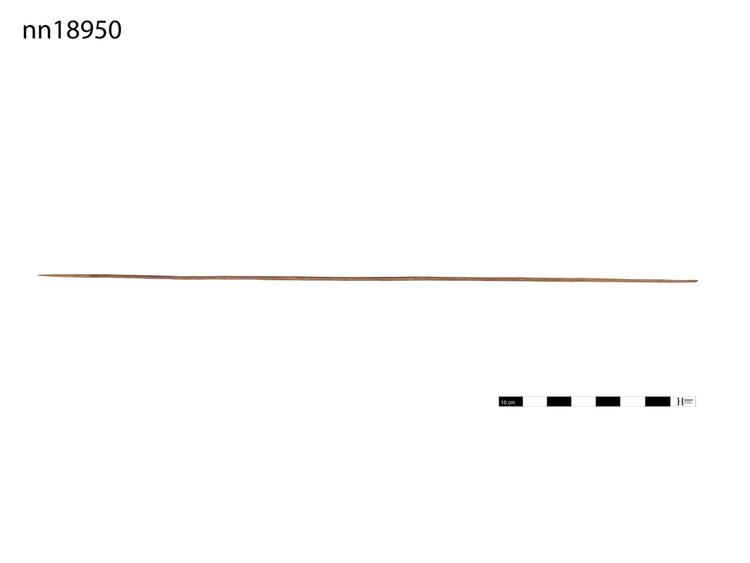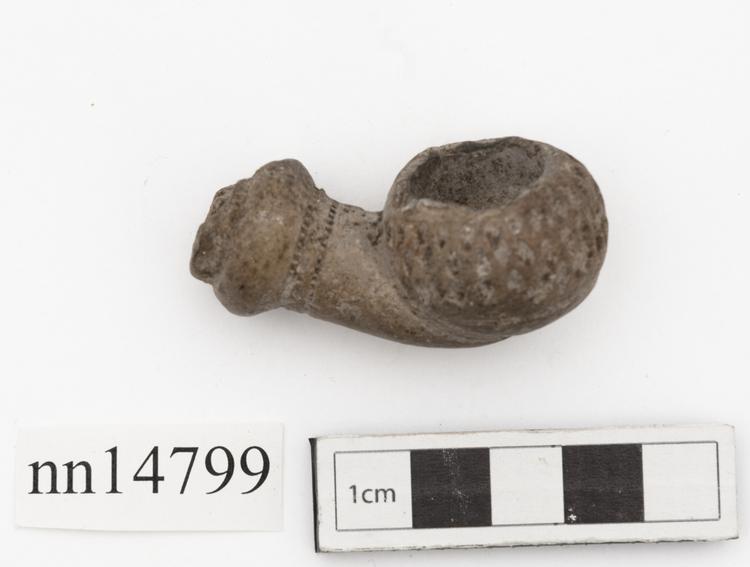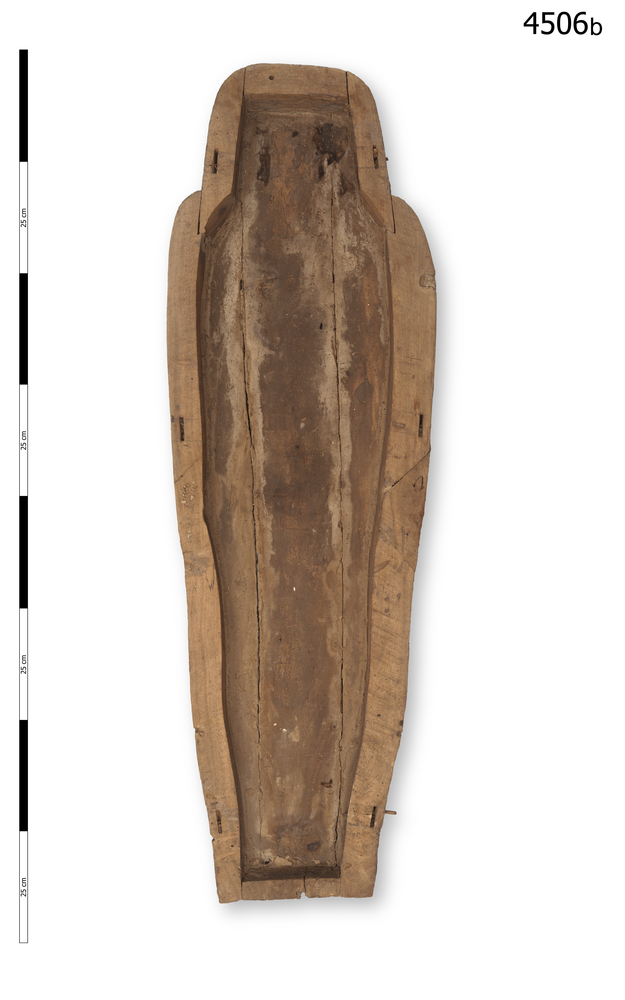
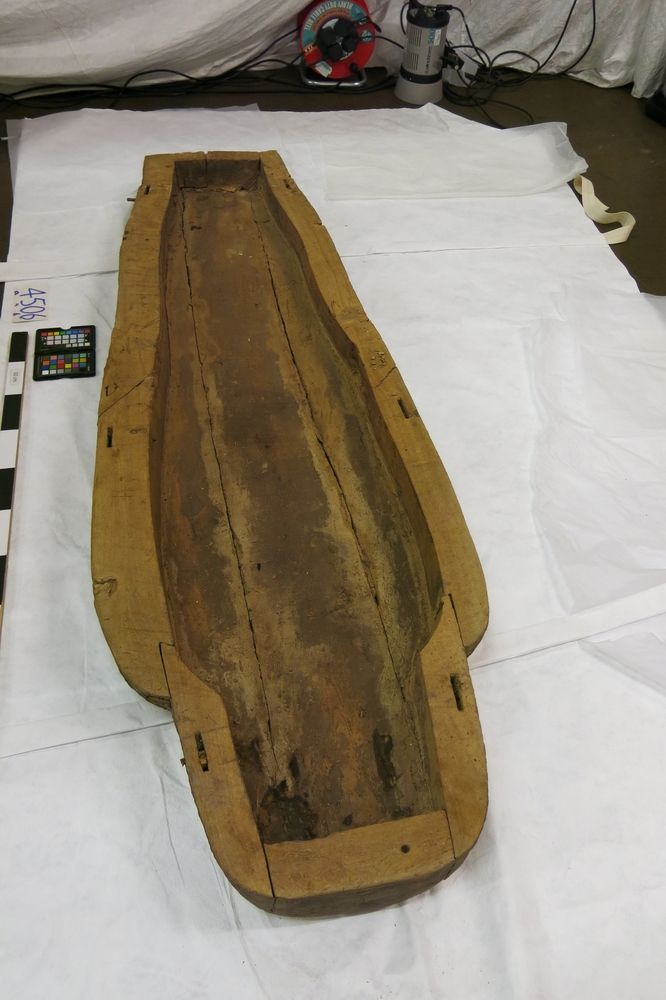
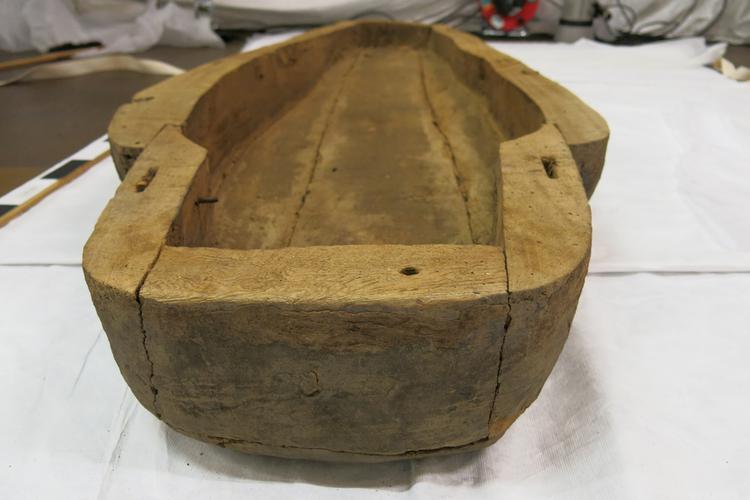
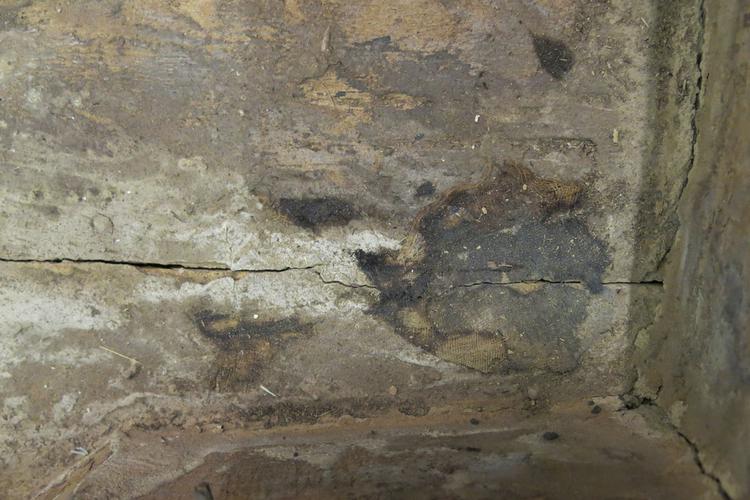
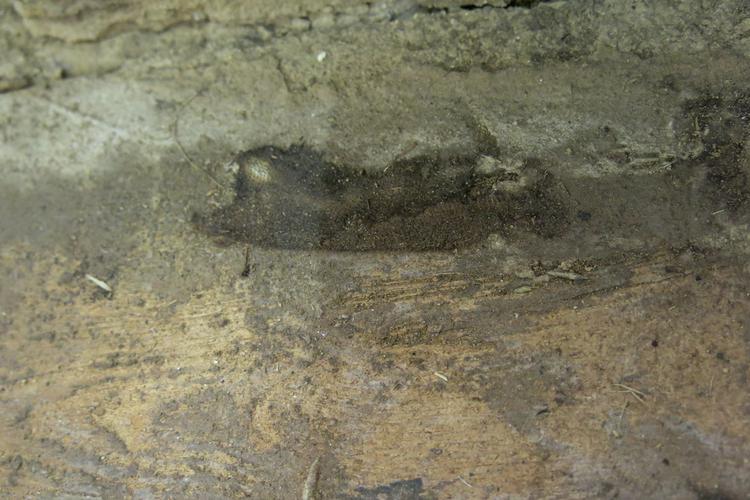
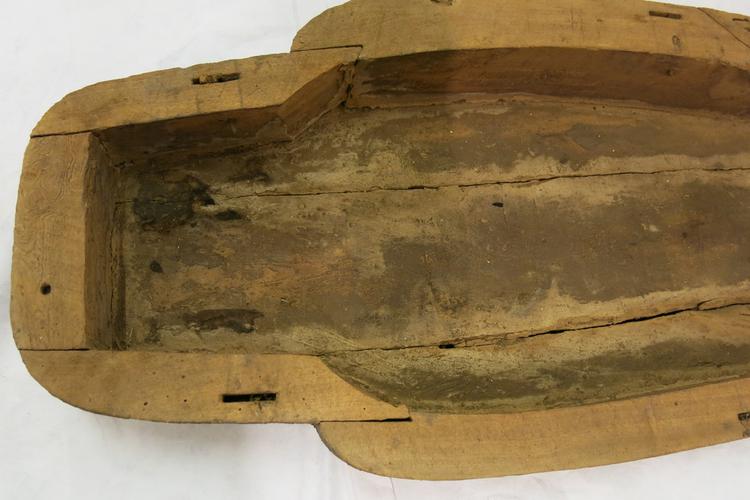
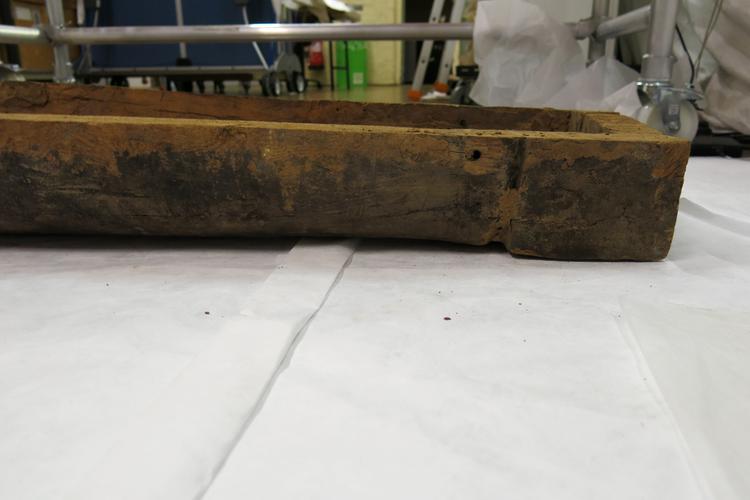
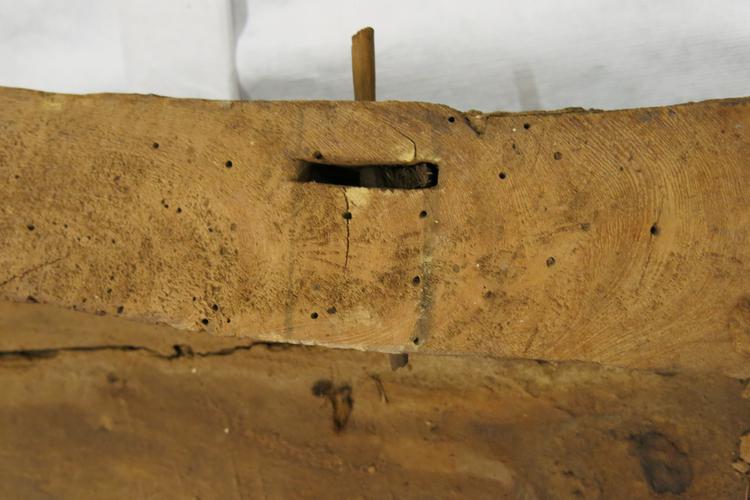
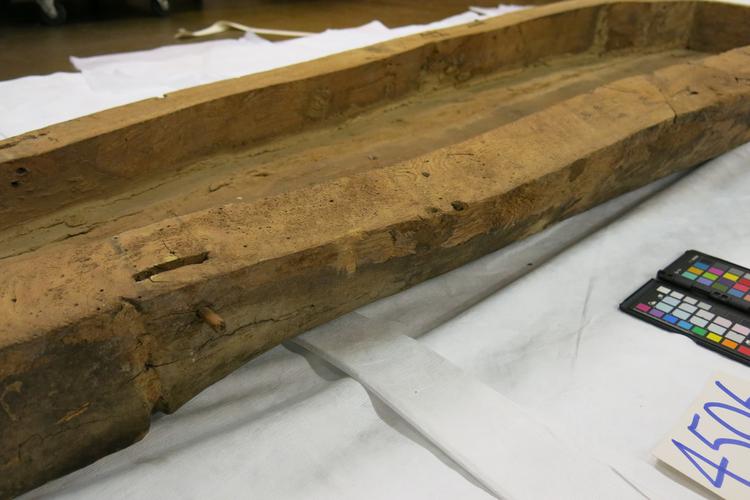
The bottom half of a coffin for a priest. It is made of plain, unpainted wood, made in several sections and curved underneath. There are three pairs of slots at the edges for the lid to slot into. The base is made up of three sections of wood, one more at each side, two sections at the base and one at the head. Wrappings can be seen stuck to the bottom inside at the head area.



